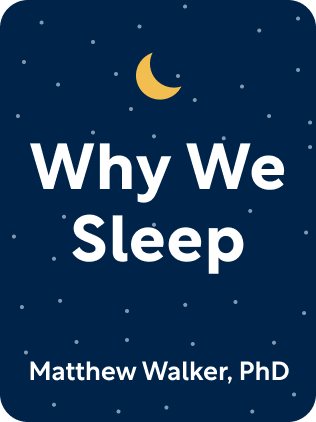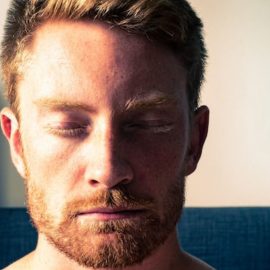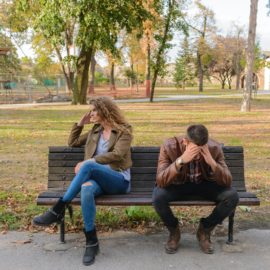

This article is an excerpt from the Shortform summary of "Why We Sleep" by Matthew Walker. Shortform has the world's best summaries of books you should be reading.
Like this article? Sign up for a free trial here .
What are the signs of narcolepsy? How do you know if you have it, or some other sleep disorder?
Luckily, when you ask “what are the signs of narcolepsy?” there are clear symptoms that indicate you may be suffering from the disorder. The next steps are to research what the signs of narcolepsy are and learn what may be causing it.
What Are the Signs of Narcolepsy?
What are the signs of narcolepsy, and what causes narcolepsy? People with narcolepsy show sudden bouts of extreme sleepiness during the day. Some people who are chronically sleep-deprived mistakenly think they’re narcoleptic. The severity of feeling for narcolepsy is far more severe, equivalent to the feeling after 3 consecutive all-nighters. Narcolepsy occurs in just 1 out of 2,000 people
What are the signs of narcolepsy other than having sudden bouts of sleepiness? Narcoleptics also suffer other symptoms:
- Sleep paralysis (waking up in REM sleep during muscle atonia), accompanied by a feeling of dread (which comes from being unable to move in response to possible threat).
- Many UFO sightings are attributed to sleep paralysis
- Cataplexy (sudden loss of muscle control while awake)
- In cataplexy, patients aren’t asleep — they’re fully active but paralyzed.
- These are triggered by strong emotional reactions, both positive and negative (jokes, surprise, a nice shower, playing with kids, a horn when driving)
- To avoid any triggering events, narcoleptics isolate themselves emotionally to avoid cataplexy
How does narcolepsy arise? It’s a disruption in a normal process. Normally, wakefulness is signaled by the neurotransmitter orexin in the hypothalamus; in sleep, this is shut off. This can help you understand the question, “What are the symptoms of narcolepsy and what causes narcolepsy?”
- In narcoleptic patients, 90% of orexin-secreting cells are destroyed, and orexin receptors are downregulated.
- This insufficient signaling causes the body to exist in a “not-awake not-asleep purgatory” throughout the day and night.
There are no current effective treatments for narcolepsy.
- Amphetamine/provigil is used for daytime sleepiness
- Antidepressants suppress REM sleep, which helps with sleep paralysis and cataplexy
- New drugs like suvorexant (meant to block orexin at night) caused patients to fall asleep just 6 minutes faster.
How Is Narcolepsy Different From Insomnia?
What are the symptoms of narcolepsy, and how do they differ from insomnia? Insomnia is defined as making enough time for sleeping, but having insufficient sleep quantity or quality, for more than 3 months. Symptoms include difficulty falling asleep, waking up in the middle of night, and feeling unrefreshed in the morning.
When they do sleep, insomniacs have more fragmented REM sleep and shallower brainwaves in NREM.
1 out of 9 people suffer from insomnia. It’s twice as common in women than men, and more common in blacks/Hispanics than whites, for unknown reasons.
The most common triggers of insomnia are emotional concerns or distress. The biological cause is linked to an overactive sympathetic nervous system, which raises body temperature and levels of cortisol/epinephrine. In turn, the thalamus, hippocampus, and amygdala all remain more active than in normal sleeping patients
Given the complex physiology of insomnia, it’s unlikely blunt instruments like sleeping pills will fix the root cause.
How Sleep Rhythm Works
Answering “What are the signs of narcolepsy?” is easier if you know how the sleep cycle works. Sleep is regulated by two mechanisms:
- The circadian rhythm, regulated by melatonin (produced by the suprachiasmatic nucleus in the brain). Think of this as a natural “wake drive,” making you stay awake during the day and waning during night.
- The circadian rhythm responds to light and darkness to calibrate itself. It’s naturally 14 hours and 15 minutes long on average.
- Adenosine is a fatigue signal and causes “sleep pressure.” This rises consistently through the day without sleep, making you feel more tired. Sleeping depletes adenosine, and you wake up with a lower level.
Circadian rhythms vary from person to person, depending on when they naturally wake up and have maximum energy. The idea of “morning people” and “night owls” is real, and might be able to help you identify what causes narcolepsy.
- Whether you’re a morning or night person strongly depends on your genetics.
- Why would humans evolve with this variation? Evolutionarily, having a mixture of morning people and night owls allows a population to reduce its vulnerability in nighttime to a shorter period of time.
- Example: As morning people sleep earlier (say at 10PM), night owls can keep up the watch. Then as night owls get tired (say around 4AM), the morning people are starting to wake.
- But in modern times, the night owls are heavily punished, since early work times force night owls to sleep and wake up earlier than they would naturally prefer. This reduces performance in the mornings. Furthermore, by the time night owls peak in the afternoon, the work day has already ended. Think about this when you consider the question what are the symptoms of narcolepsy.
So what are the signs of narcolepsy? Commonly, symptoms of narcolepsy are sudden drowsiness or sleep paralysis. If you believe you show some of the signs of narcolepsy, it’s best to see a medical professional.

———End of Preview———
Like what you just read? Read the rest of the world's best summary of Matthew Walker's "Why We Sleep" at Shortform .
Here's what you'll find in our full Why We Sleep summary :
- Why you need way more sleep than you're currently getting
- How your brain rejuvenates itself during sleep, and why nothing can substitute for sleep
- The 11-item checklist to get more restful sleep today






